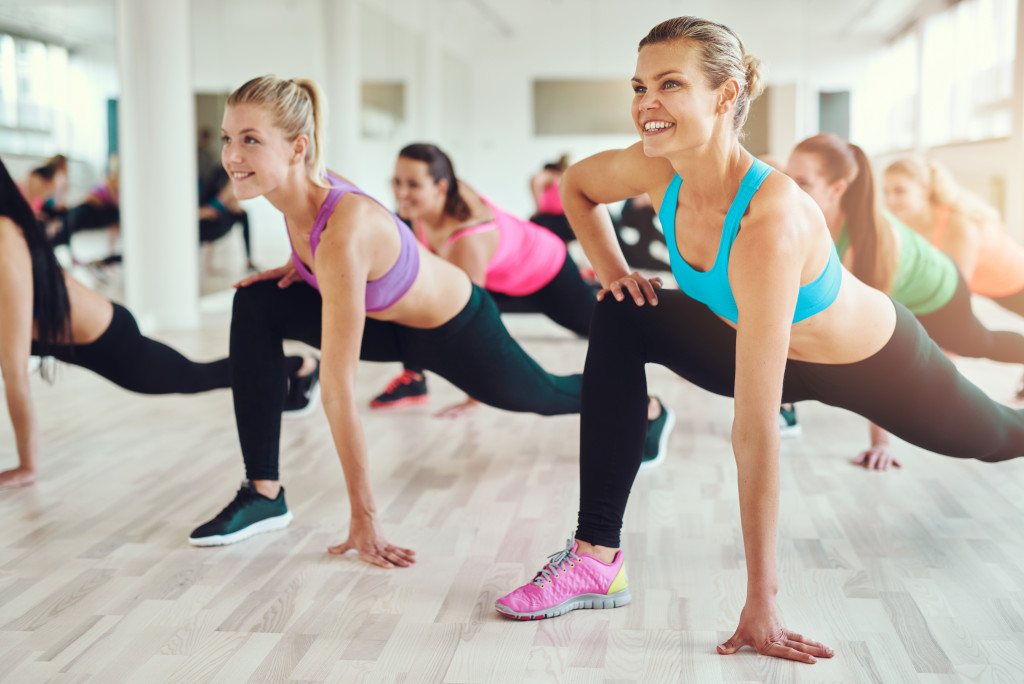It’s no secret that physical flexibility is key to a successful yoga practice. But what if you’re struggling to make progress in your poses? It could be because your body is physically inflexible. Luckily, there are plenty of ways to improve your flexibility — and we’re going to share them with you!
Crossfit Regimen
Crossfit is a high-intensity fitness regimen that combines weightlifting, cardio, and gymnastics. The goal of Crossfit is to improve your overall fitness level and make your body more physically flexible. The first step in starting a Crossfit regimen is to find a local Crossfit gym or class. Once you’ve found a class, you’ll need to purchase a Crossfit membership. After you’ve become a member, you’ll be able to attend Crossfit classes and use the Crossfit facilities. The next step is to start attending classes. During each class, you’ll participate in various exercises that will challenge your body and help you improve your fitness level. As you become more fit, you’ll be able to add more challenging exercises to your routine. Finally, one of the most important aspects of Crossfit is the community. Crossfit gyms are typically very supportive and welcoming places. You’ll make new friends and have access to a wealth of knowledge and experience.
In case you suffer any injury while doing Crossfit, try getting the treatment as soon as possible. Since this regimen works on your muscles, any injury can directly have an impact on your muscles. Hence, in such a case, find a healthcare professional who can help with Crossfit injuries. If you’re looking for a way to improve your overall fitness level, make new friends, and have fun, then Crossfit is the perfect activity.
Yoga Poses
One of the most important benefits of yoga is that it can help improve your flexibility. While some people are naturally more flexible than others, everyone can benefit from a regular yoga practice. The following poses will help to increase your flexibility and range of motion:
- Cat-Cow Pose: This pose is a great way to warm up your spine and prepare your body for deeper stretches.
- Downward Facing Dog: This classic yoga pose stretches the entire backside of the body, including the hamstrings, calves, and lower back.
- Three-Legged Downward Facing Dog: This variation of the Downward Facing Dog adds a deep stretch to the hips and groin.
- Camel Pose: This deep backbend stretches the front of the body, including the chest, shoulders, and abdomen.
- Pigeon Pose: This hip opener stretches the glutes and thighs while releasing tension in the lower back.
By adding these poses to your regular yoga practice, you’ll notice increased flexibility over time. Remember to breathe deeply into each pose and listen to your body’s limits. With regular practice, you’ll be amazed at how much your flexibility.

Static Stretching
Static stretching is a type of stretch that is performed by holding a position for an extended time. This type of stretch is beneficial for lengthening muscles and improving flexibility. To perform a static stretch, find a comfortable position and hold the stretch for 30 seconds. Remember to breathe deeply into the stretch and relax as much as possible.
- Hamstring stretch: Sit on the ground with your legs extended straight in front of you. Reach for your toes, keeping your back straight. Hold the stretch for 30 seconds.
- Calf stretch: Stand with one leg behind you, bend your front knee and lean forward onto your front leg. Keep your back leg straight and hold the stretch for 30 seconds. Repeat on the other side.
- Quadriceps stretch: Stand and hold onto a chair or other support for balance. Bend one knee and bring your heel up towards your buttock. Use your other hand to grab your ankle and pull it closer to your body. Hold the stretch for 30 seconds and repeat on the other side.
Foam Rolling
Foam rolling is a form of self-massage that can help to improve flexibility by breaking down knots and relieving muscle tension. It is especially beneficial for muscles that are tight or have trigger points. To foam roll, place the foam roller on the ground and position the muscle you wish to target on top of it. Slowly roll back and forth over the muscle, applying as much pressure as you can tolerate. You should feel a deep tissue massage as the foam roller breaks up knots and releases tension. Hold each trigger point for 30 seconds before moving on to the next muscle group.
Overall, flexibility is important for maintaining a healthy body and preventing injuries. By adding yoga and static stretching to your routine, you can improve your flexibility over time. Foam rolling is also a helpful tool for releasing muscle tension and improving flexibility. Remember to listen to your body and breathe deeply into each stretch. With regular practice, you will notice a significant improvement in your flexibility.

